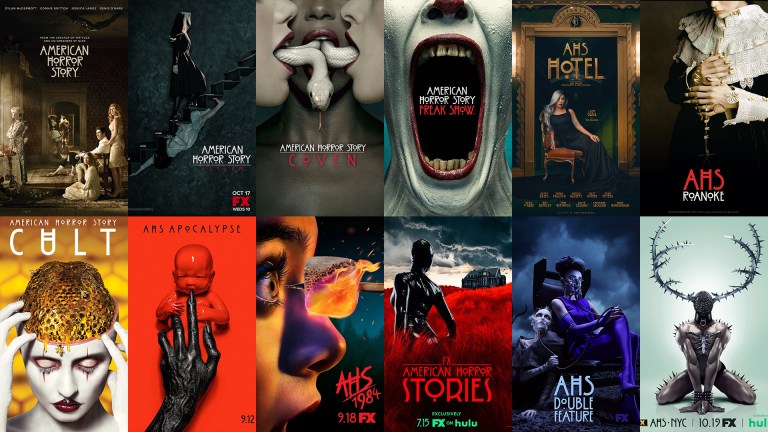Why Are Boys Not Reading More? And Is Publishing Addressing The Crisis?
In a session on "Readers Left Behind" at BEA's IDPF Digital Book Conference, author Peg Tyre and Scholastic's Francie Alexander discuss the crisis in boys' reading -- what we know and what we should be doing about it.


‘We Are Not Creating Male Readers’
I would suggest to you that we have shared responsibility here — teachers, parents, authors, and publishers.
Literacy is the kingpin skill of school success. Unless we get all kids reading, they’re not going to be successful.
 That’s Peg Tyre, author of The Trouble with Boys: A Surprising Report Card on Our Sons, Their Problems at School, and What Parents and Educators Must Do (Harmony, 2008).
That’s Peg Tyre, author of The Trouble with Boys: A Surprising Report Card on Our Sons, Their Problems at School, and What Parents and Educators Must Do (Harmony, 2008).
A highly regarded journalist — her book was predicated by her Newsweek piece, The Boy Crisis — Tyre spoke Thursday (28 May) at the International Digital Publishing Forum’s (IDPF) Digital Book Conference at BookExpo America (BEA).
There is a pipeline that carries all students … from kindergarten to college. And there are key junctures where boys are falling out of that pipeline, even being squeezed out of that pipeline.
Tyre appeared with Francie Alexander, Senior Vice President of Scholastic Education and Scholastic’s CAO (chief academic officer), who presented analysis from Scholastic’s very informative Kids & Family Reading Report.
I titled our session “Readers left Behind: The Gap Between Boys’ and Girls’ Reading.”
Together with the “Youth and Teen Reading” session we had at the conference with Nielsen’s Kristen McLean, hosted by PubCoder’s Paolo Albert, we were able to bring some issues into focus around young readers. Here is a write-up at The Bookseller’s The FutureBook on McLean’s session. And you may be interested in McLean’s coming Children’s Book Summit, 16th September.
I was particularly glad to be able to program the Tyre-Alexander session on boys and reading into the conference because, as many of my readers know, the gap between male and female readers, at all ages, is something that I believe is far more alarming than many in publishing want to admit.
As I said in introducing this session, even if you put aside the cultural concerns about boys and men reading less than girls and women, you still haven’t answered the profit question: why publishing is leaving half the world’s money on the table by not aggressively courting male readers? Such a stance makes no business sense.
Imagine that in some bizarre Twilight Zone episode, we all awoke tomorrow to find that guys were no longer driving cars. What would happen? No-brainer: car manufacturers would be in overdrive (sorry) by lunchtime. There would be massive campaigns to “Get Our Guys Back Behind The Wheel!” and “Give That Boy The Keys Tonight!” Wild discounts would be offered for cars bought by men. Special-ed courses would spring up at every vocational college and community center: “Our Dudes Are Driving (Not Driven)!”
Too crazy? Okay, then simply imagine what would happen if women and girls were the ones not reading. Would the response be so muted? I doubt it. Women have rightly cultivated reading as a pivotal feature of a good life and an independent spirit. And publishers understand women as their primary consumer base. I say why stop there?
Why does the publishing industry seem to shrug about this problem of guys not reading? Are publishers so ready to capitulate to gaming and TV and Spotify? Or are there other factors in play here? I’ve addressed some of the possibilities in a very successful exchange with an audience at The Muse and The Marketplace in Boston. I hope to write up that event soon. And I’ll be talking about this in a special presentation at Elizabeth Jennings’ Matera Women’s Fiction Festival in September.
At Thought Catalog, I’ve written to the topic several times: here, for example, in relation to Mark Zuckerberg’s A Year In Books program, and in regards to children’s literature. I appreciate the work that author Jonathan Emmett is doing on the topic, and commend his writings to you about the problem as it relates to children’s picture books. Here’s his well-named Cool Not Cute! site.
Gender issues are so emotionally charged today that I’ve found it takes a lot of nerve simply to engage in this important public debate. This makes me appreciate all the more the studied insights, the even-handed discussion, and the urgency that both Alexander and Tyre are bringing to this critical issue.
Many years ago, a rather shy friend of mine handed a flower to the vocalist Jane Olivor when we were seeing one of her cabaret performances. She thanked him, saying, “It takes a strong man to bring a rose.”
These days, I’d say it takes a strong woman to talk about how we’re not creating male readers. I honor this strength in our two speakers. I’m grateful they were willing to take time from their work to speak at our conference at BEA. This session was a distinct highlight, marked by compassion, plain speech, and frank intelligence.
Peg Tyre:
I’m fascinated by who reads and who doesn’t. I’ve become convinced that literacy, deep literacy — reading, writing, speaking, and listening — are the skills we’re going to need [for] our children to move into the digital age.

Isn’t learning to code an option? — especially considering the male dominance in technology?
No, it’s no substitute for deep literacy, Tyre answers.
We can use coding. A lot of people can learn code. But learning to read and write and speak and listen in any circumstance under any conditions is probably the thing that’s going to keep our children, our boys, our girls, employed.
At the Digital Book conference, Tyre took on the role of filling in “shoulder research” around the Scholastic material Alexander offered, shedding light on what’s behind today’s crisis in boys’ and men’s reading patterns:
We know that boys come into school, kindergarten, having spoken fewer words and having fewer pre-literacy experiences than their female counterparts. They’ve been to the library less. They’ve been read to less. It’s not clear from the data whether this is some kind of parental sexism…but we know that they come in with fewer of those experiences than girls.
That gap between boys and girls grows wider — grows wider — with every day that they’re in school. Our public schools are exacerbating that gap.
Peg Tyre
Boys in their senior year of high school, Tyre says, write no better than do sophomore girls. “There are ways in which their instruction is not delivering what they need.”
We know that 33 percent of boys in high school are not fluent readers.
That’s 33 percent, she says, as opposed to about 25 percent of females. And that gap reflects, she says, the distance between poor kids and middle-class kids in school.
But actually, when you pull apart the data, you see [this gap] even in boys who have one college-educated parent. So this is not an issue of poverty. This issue is all around us. This is among what we traditionally consider the book-buying public. This is a big problem for publishing.
Tyre is working on a new book on literacy and education “and what this catastrophe may look like.” For now, she has several key points to offer. Among them:
We’re kind of quiet about what practices are advantaging and disadvantaging certain times of kids. When you look at kinds of work and activities in the classroom that help engage boys, I think more teachers should know about that. I think they should start the first day of teachers’ college, learning about that.

A key recommendation — one that might sound ironic — lies in Tyre’s conviction that focusing too narrowly on basic skills is a mistake.
“I think we need to restore a broad curriculum,” she says. “We need to have art, we need to have history, we need to have music, civics, gym. There are a lot of well-meaning people who have looked at the English and math boot camps that have emerged in our schools, and what gets tested is what gets taught: reading and math. We need to have a more forceful argument about why we need to broaden the curriculum…[As E.D. Hirsch wrote in Cultural Literacy: What Every American Needs To Know (1988, Vintage)], the way to accelerate learning and literacy is to give children broad conceptual knowledge about stuff, about the world; about science, art, history, English, literature, broadly. And the way to depress achievement is to deny them that exposure.
Children can read far above grade level if they’re familiar with the subject they’re reading about…This is particularly true of boys [and the problem is that] when books are given to kids in school, those books are largely fiction.
Peg Tyre
“We might think of “music appreciation” as one of those nice, woolly middle-class” school curricula offerings, Tyre says, “but music appreciation gives you the possibility of learning about Mozart, which gives you the possibility of learning about Vienna, which gives you the possibility of learning about the 18th century and the political tides that were blowing across Vienna and changed civilization. We do this by re-introducing a broad curriculum
“Specifically for the publishing industry and authors: put the gristle back into young adult literature,” she says. “It’s what boys want to read.
“Boys want to read books that are quirky and terrifying and awe-inspiring,” Tyre says. “They want books about history and inventors and leaders. I’d like to see books about military history, books about weapons. I know that’s difficult in today’s schools…but ancient weapons, Medieval weapons.
“I’d like to see a lot fewer libraries that are packed with stories about girls who are in jeopardy,” Tyre says, “and a lot more school libraries balanced with books about heroes and inventors.”
Look at The Simpsons, look at South Park. Those are like the ultimate cultural experience for young men. They’re super vulgar, shockingly vulgar. The mom in me cringes, but they’re about something, they’re about life and bring in substantive content. So I’d like to make a shout-out for books that are nonfiction, books that are of high interest to boys, and books that are vulgar.
In two more points, Tyre offers a warning and some advice directly to the publishing industry.
- The warning: “Video games are eating your lunch…Those working in the video game industry are interested in developing story, creating strong stories. There are opportunities to extend what boys read from video gaming.”
- The advice: “We need more examples of literate men and men reading. We need coaches, dads, history teachers, all helping boys make selections and modeling what it is to be a literate man in society.”

Francie Alexander
Our national assessment of educational progress shows that for decades, boys have lagged behind girls in reading.

Scholastic’s Francie Alexander explains that the rolling Kids and Family Reading Report the publisher produces periodically focuses on kids from age 6 to 17.
The report is generated from the responses of “a thousand kids and a thousand parents,” Alexander says.
Some of this report was featured in my Zuckerberg piece earlier this year, with Scholastic’s generous permission.
In this particular iteration of the study, Alexander’s team looked at the question of whether kids are reading a book for fun. A large discrepancy shows up when Scholastic tests this question on its respondents: 57 percent of the girls say they’re reading a book for fun, but only 45 percent of boys say this.
There’s an even larger discrepancy when the question is “how children feel about independent reading time at school.” In that instance, only 44 percent of the boys say they like independent reading at school — 28 percent of them say it’s one of their favorite parts of the school day, 26 percent say they wish they’d do more of this in school. Among girl respondents, 61 percent say they like independent reading at school, with 41 percent saying it’s one of their favorite parts of the day and 36 percent saying they wish they’d do this more frequently at school.

“We also have kids’ focus groups,” Alexander says, and they have spent time in these groups testing what it is that children say they like best in reading.
- “Humor came out on top” in these groups, as well as in the core report testing.
- “Novelty was another aspect for this post-millennial generation,” she says. “It came up over and over again.”
- “Creativity. We know the maker movement is so strong.”
- “Authenticity. They like keeping it real.”
- “Agency. One of the things we say at Scholastic is about ‘meeting the kids where they are.'”
Alexander’s recommendations and observations include:
- Allow children to choose their own books to read. “Kids are more likely to finish their books if they choose them, themselves.”
- Help kids develop their skills. Alexander agrees with Tyre’s recommendation for more nonfiction in the curriculum.

“Boys, we have found, like nonfiction” — which she says they like to apply to real-world issues and problems and tasks — “as early as first grade.”
Boys also like books, she stresses, “that help them become dinosaur experts” or experts of other kinds, “letting kids develop expertise in certain subjects.”
And along those lines, “more series,” she recommends may be a key, when those series help boys “become experts by reading one book after another in a connected, smart way.”
Another suggestion, she says, is a very specific kind of character arc, shared by Harry Potter and Wimpy Kid: “Problems to be solved, challenges to be met — they were different, and not in ways they felt good at the time. And then at the end, they accept the differences in themselves and solve the problems.”
And “harness the power of technology. Rather than look at it as a distractor that keeps our kids from reading, what is it about technology that can be compelling and bring kids to reading?”
Alexander notes that tech can make reading:
- Interactive,
- Individualized,
- Innovative,
- DIY (do it yourself), and
- Inviting.

Among other points in Alexander’s presentation were two we hear so frequently that it’s a surprise they’re not better and more widely understood:
“Struggling readers were the strongest advocates of ebooks, suggesting that ebooks helped them gain confidence in their reading abilities.”
“We have found in our survey that all kids want to be read aloud to. This a big idea. It isn’t until about sixth grade that kids can comprehend all that they read on their own. And you can always advance them by reading above” their own skill levels. Kids who are read to simply do better.”
Lastly, Alexander introduced us to “the current boy in my life, my godson Benjamin” and his own preferences in reading at the moment.
Note that his selections follow the patterns that research indicates. Benjamin has announced that he’d like to be an expert in rattlesnakes and other bad reptiles; he’s reading humor; and in order to step up as a dinosaur expert, he’s reading “above his grade,” Alexander says proudly, to learn about the 1990 discovery by Sue Hendrickson and her team in South Dakota of the best-preserved remains found to date of a Tyrannosaurus rex (now in Chicago’s Field Museum of Natural History).
‘Mom, They Want Us To Be Girls’
In a series of extremely good questions from the floor at the Javits Center in New York, Tyre and Alexander were asked after their presentations whether any of their research had looked at issues of comparative treatment in school of boys and girls as a factor in boys’ lagging performance.
Alexander picked right up on the question:
One of our authors at Scholastic, Dr. Julie Washington, said her fourth-grade son came home one day and said, “Mom, I figured school out. They want us to be girls.”
Tyre pointed out that her own book, The Trouble With Boys, deals with just such issues. There is a chapter, for example, titled “Smart Boys Who Get Bad Grades: Are Schools Biased Against Boys?”
Peg Tyre
Clearly there are concerns with the dwindling numbers of male teachers. One of the best campaigns in this regard I’ve come across is a UK-based effort to have fathers read where their children can see them do it. So many dads read primarily at the workplace, the thinking goes, that sons aren’t getting a chance to see their prime role models engage in reading behavior.
But on the whole, the issues around male reading and its problems are deep and complex and don’t seem to be causing our major publishing forces to stop and consider what’s occurring.
In The Trouble With Boys, Tyre writes this — and I’m reminded again by her first line of the widespread issues cited by Emmett of problems parents have in finding picture books for boys. When Tyre here mentions “schools…communities…elected officials,” I’d add publishers:
It turns out that more parents than you can possibly imagine are noticing the same things. For a variety of reasons, some obvious and some very subtle, a great many boys from all walks of life and every community are not thriving in school. Although your son’s trouble may be setting off fireworks in your household, for the most part our schools, our communities and our elected officials are ignoring boys’ widespread underachievement. Yet even as some folks turn a blind eye to the problem, the way boys struggle in school has begun to set off a cascade of effects large and small that are likely to change the fabric of our communities for generations.




